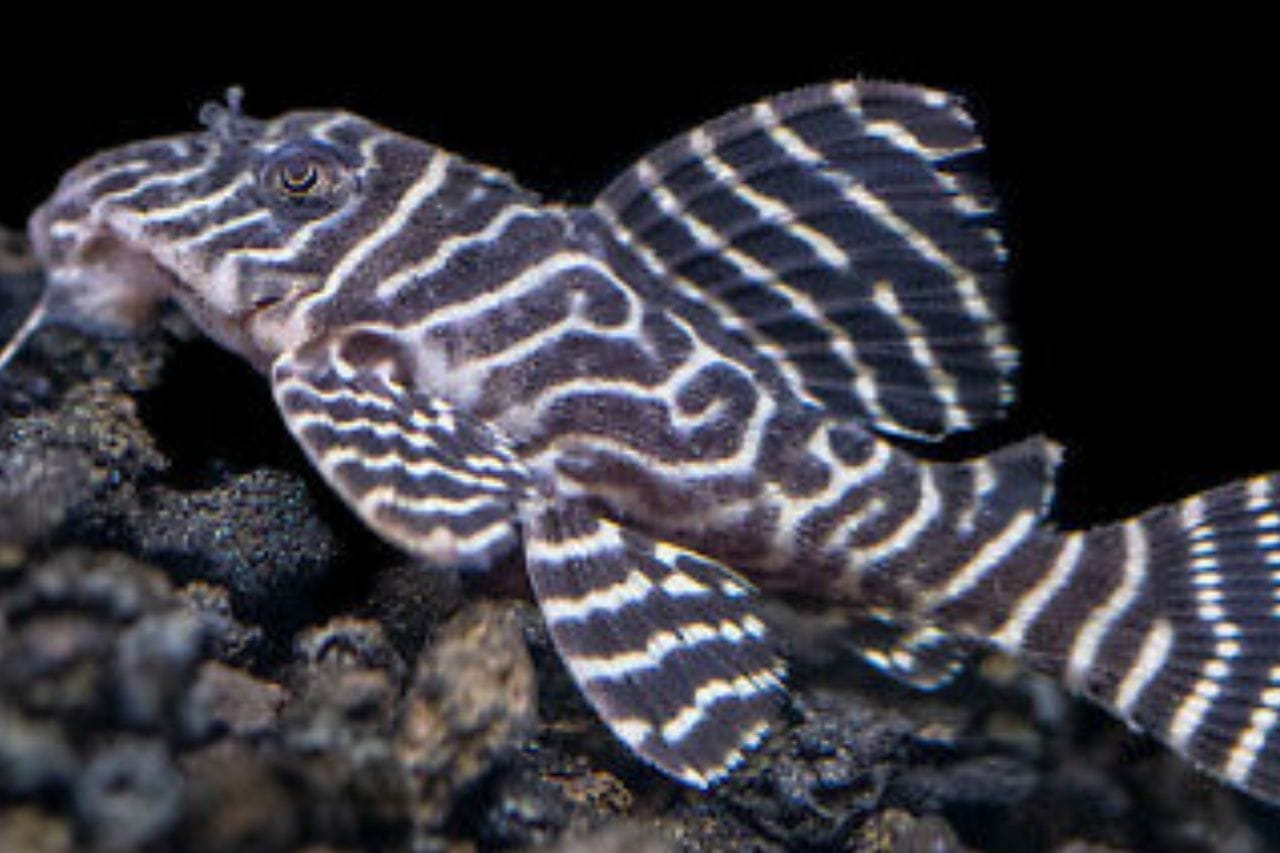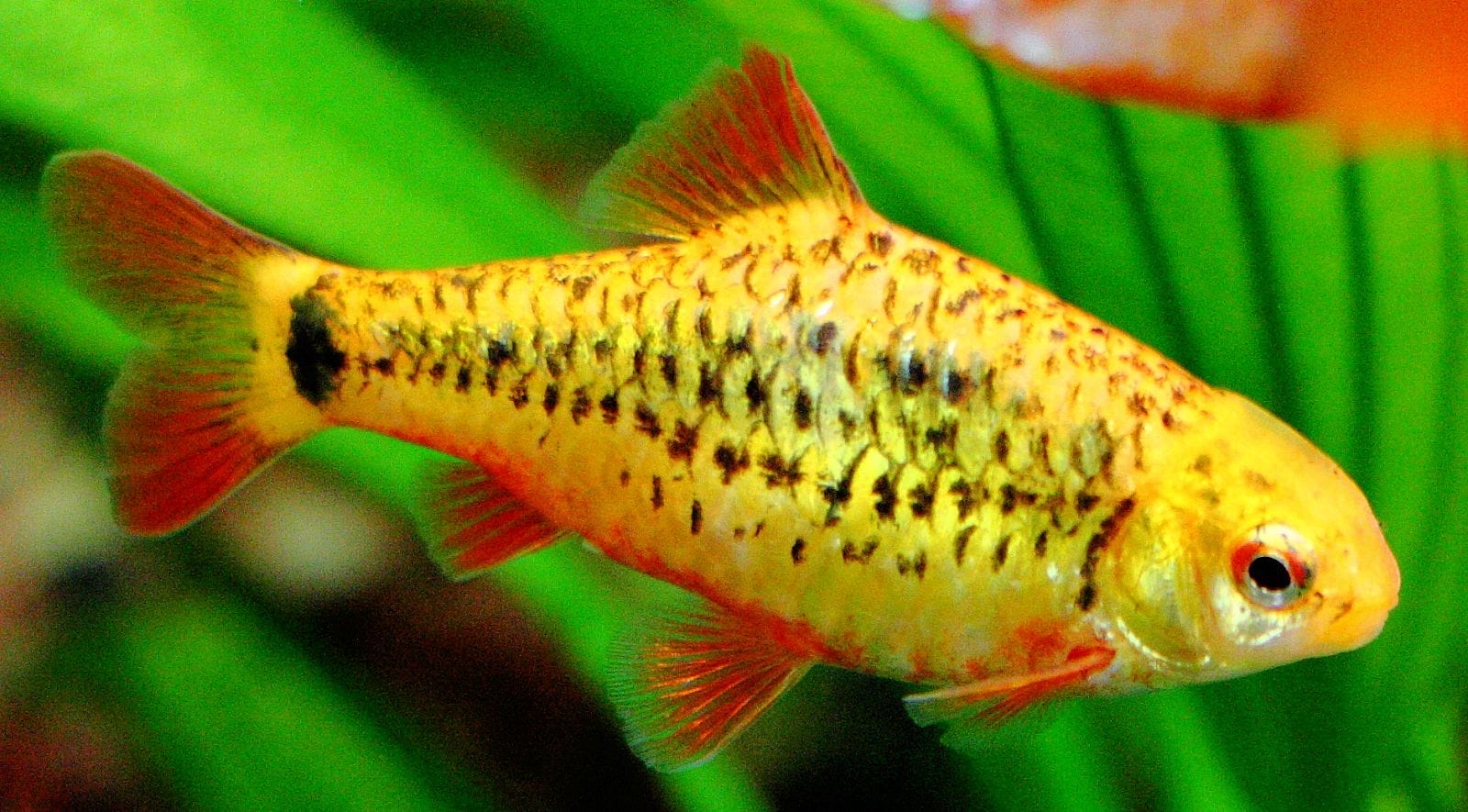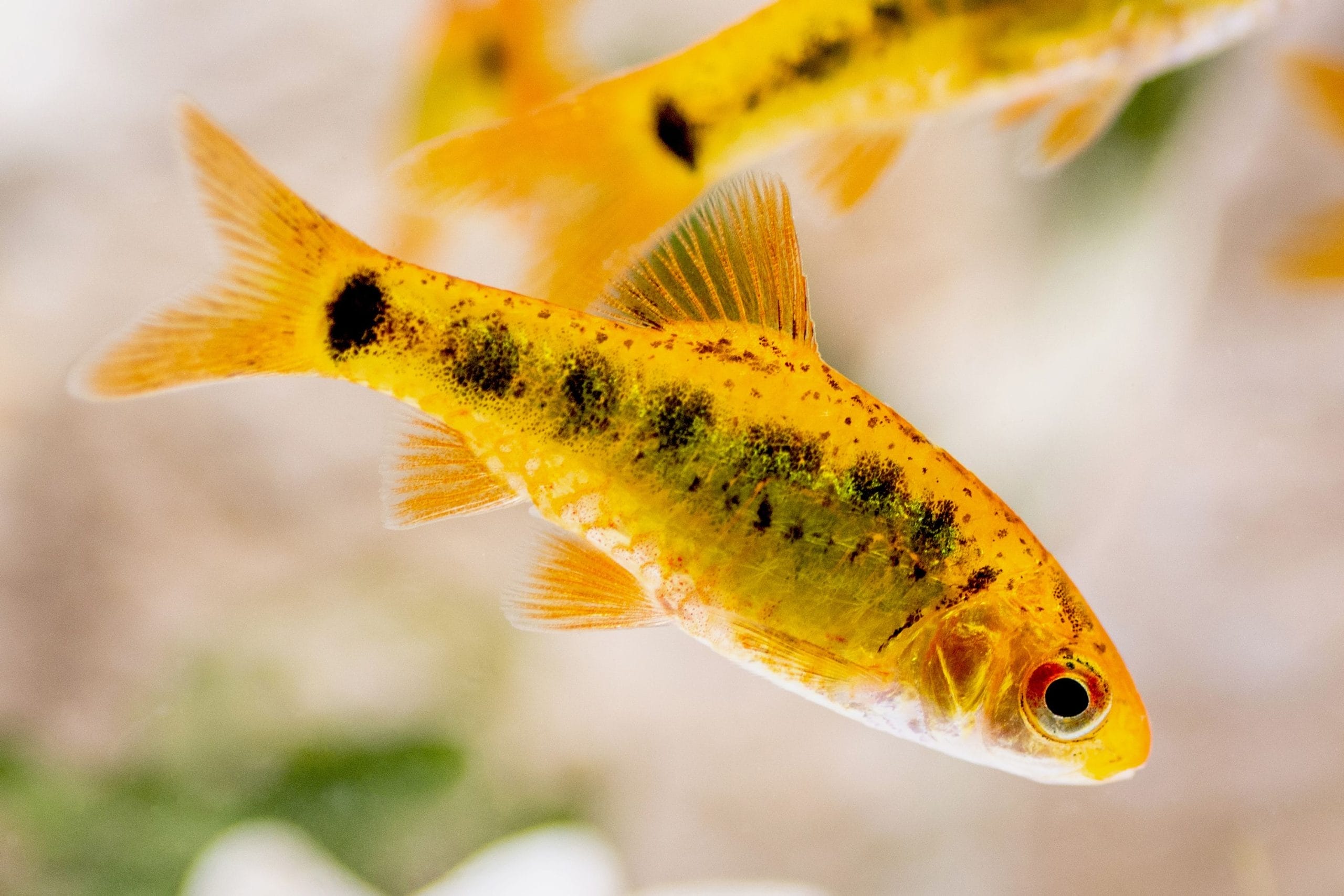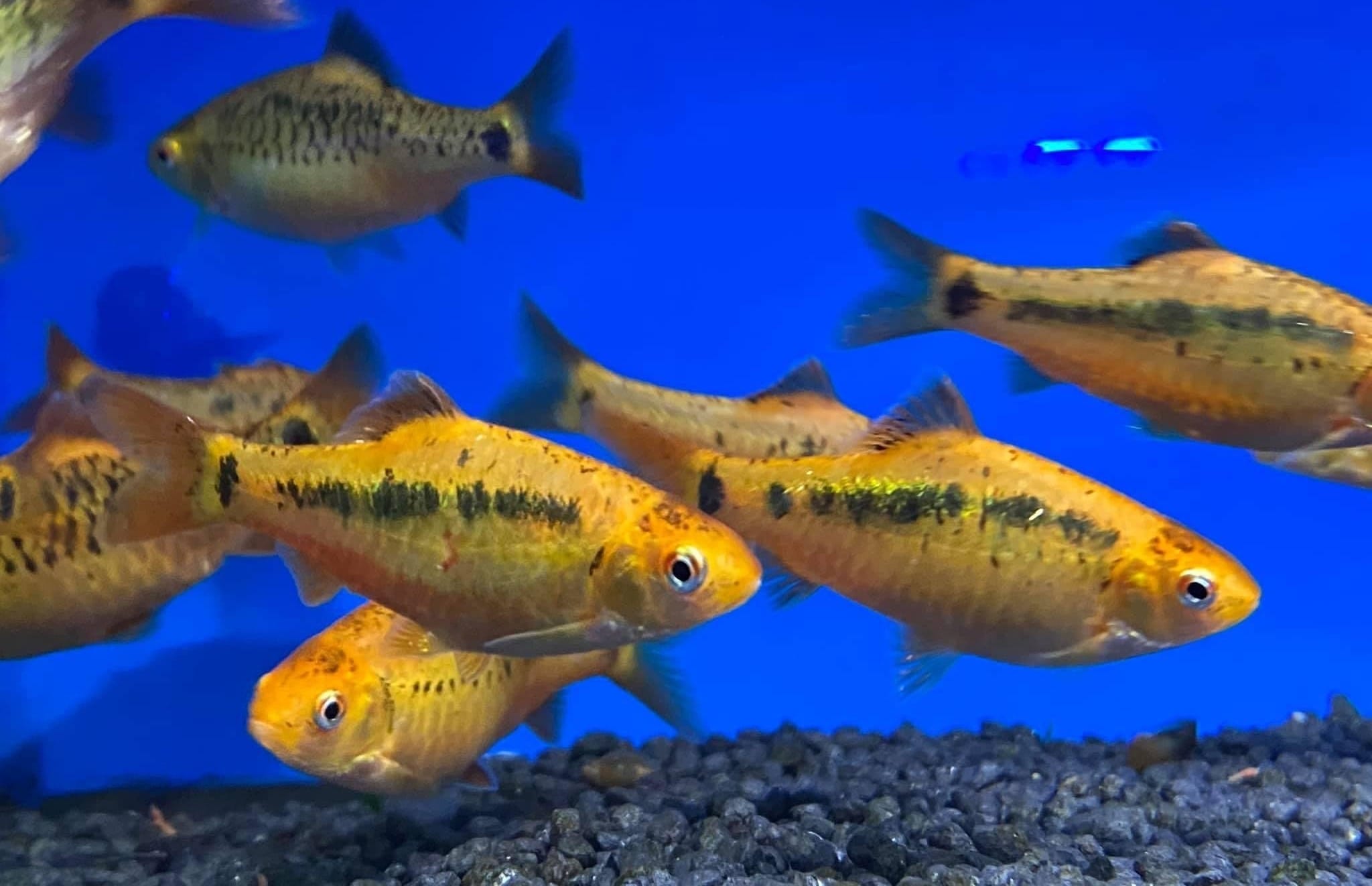
Gold Barbs: A Comprehensive Guide

Gold barbs, also known as puntius semifasciolatus or Chinese barbs, are popular freshwater fish that have captured the hearts of aquarium enthusiasts around the world. With their vibrant gold and black coloration, hardy nature, and peaceful demeanor, gold barbs make an excellent addition to any community aquarium.
Whether you’re a beginner aquarist or an experienced fish keeper, this comprehensive guide will provide you with all the information you need to successfully care for gold barbs in your own freshwater tank. Gold barbs are known for their vibrant color and peaceful nature, making them a popular choice for community tanks. They are relatively easy to care for and are a great addition to any freshwater aquarium. With the right knowledge and a little effort, you can create a thriving environment for your gold barbs. If you are interested in expanding your knowledge of fish care, you may also want to explore cherry barb aquarium care, as cherry barbs are another popular and beautiful freshwater fish choice.

Unraveling the Mystery of Gold Barbs
Gold barbs, also known as Puntius semifasciolatus, are popular freshwater fish from China’s Red River basin. They have a peaceful temperament, vibrant golden color, and are low maintenance.
These schooling fish thrive in well-maintained aquariums with hiding places and live plants. They prefer swimming in groups of five or more. Gold barbs have a varied diet and readily accept flakes, pellets, frozen or live foods like bloodworms or brine shrimp. Avoid overfeeding to maintain their health.
In captivity, gold barbs breed easily and lay eggs on various surfaces within the aquarium. The tiny fry require frequent feeding throughout the day. Overall, gold barbs are an excellent addition to freshwater aquariums due to their peaceful nature, easy care requirements, and stunning golden coloration.
Understanding their Habitat
Gold barbs are freshwater fish that are commonly found in streams, particularly in the Red River basin of China. These shoaling fish thrive when living in groups and hiding among plant roots or marginal vegetation in slow-moving water with abundant plants and hiding spots.
They are highly adaptable to different water conditions, making them a popular choice for freshwater aquariums; however, it is essential to replicate their natural habitat as closely as possible to ensure their health and happiness.
Gold barbs have a bright golden color, which makes them stand out in an aquarium setting. Their peaceful nature makes them ideal for community tanks, but they can be aggressive towards smaller fish if they feel threatened.
To keep them healthy, it is recommended to feed them a varied diet consisting of high-quality flakes or pellets supplemented with live or frozen foods like brine shrimp and bloodworms.
Characteristics
Gold barbs are a popular choice among aquarists because of their hardy nature, which makes them suitable for both novice and experienced fish keepers. These fish have a lateral line that runs along their body, enabling them to detect changes in water pressure and movement.
They also have a unique appearance with an upper jaw that extends beyond the lower jaw. Gold barbs typically grow up to 2 to 3 inches in size, making them ideal for smaller aquariums. With proper care, these fish can live up to 5 to 8 years.
In addition to their physical characteristics, gold barbs are also known for their peaceful temperament and ability to coexist with other fish species. They prefer living in groups and feel most comfortable when kept with at least five other gold barbs. As omnivores, they require a balanced diet of both plant-based and protein-rich foods such as flakes, pellets, and frozen or live foods.
When it comes to tank requirements, gold barbs prefer a well-aerated aquarium with plenty of hiding places such as plants and driftwood. Maintaining good water quality is essential for the health of these fish, so regular water changes are necessary.
They can tolerate a range of water parameters but prefer slightly acidic to neutral water with a pH range between 6.5-7.5. Overall, gold barbs are an excellent addition to any community aquarium due to their hardiness, peaceful nature, and unique appearance.
Colors and Markings
Gold barbs are named for their stunning gold coloration, which is accented by bold black markings. The intensity of their colors can vary, with some individuals exhibiting deeper gold hues than others.
Some gold barb variants, such as the Schuberti barb (Barbodes semifasciolatus var. Schuberti), may display red or orange accents on their fins, adding even more visual interest to the aquarium.
The black markings on gold barbs can vary in shape and size, giving each fish a unique pattern. As gold barbs age, their coloration may fade slightly, but they will still retain their distinct gold and black coloration.

Decoding the Aquarium Conditions for Gold Barbs
When it comes to setting up the perfect environment for gold barbs, there are a few key factors to consider. Whether you have a dedicated breeding tank or a community aquarium, providing the right conditions is essential to the health and happiness of these fish. From water parameters to tank size, let’s take a closer look at the ideal conditions for gold barbs in an aquarium setting.
Ideal Tank Conditions for a Happy Gold Barb
Gold barbs require specific water conditions to ensure their well-being in an aquarium. To replicate their natural habitat, the water should be slightly acidic with a pH range of 6.0 to 7.5 and have a hardness level between 5 and 12 dGH (degrees of General Hardness).
The ideal temperature for these fish is between 72 and 79 degrees Fahrenheit (22 to 26 degrees Celsius). Proper filtration, regular water changes, and maintaining a clean aquarium are also vital for their overall health.
Failure to maintain these conditions can lead to stress, illness, and even death in gold barbs. It is essential to monitor the water quality regularly using test kits and make necessary adjustments to ensure the fish thrive in their environment.
Aquarium Size and its Influence on Gold Barbs’ Health
The size of your aquarium is a vital aspect to consider when it comes to the wellbeing and health of gold barbs. These active fish require a tank with a minimum capacity of 20 gallons to provide them with enough space to swim and explore their surroundings. Opting for a larger aquarium can lead to better water quality, making it easier to maintain proper care for the fish.
To create an ideal habitat for gold barbs, it is important to provide plenty of hiding spots, live plants, and open swimming areas. This helps in creating an environment that stimulates the fish’s natural instincts and behaviour. Additionally, incorporating a variety of decor elements like rocks, caves, and driftwood can help mimic their natural habitat.
While selecting the right aquarium size is critical, proper filtration and regular water changes are equally important. A well-maintained tank not only ensures good health for your fish but also enhances the aesthetic appeal of your aquarium.
Keeping up with regular maintenance will save you time and money in the long run by preventing potential health issues and prolonging the lifespan of your fish.
The Influence of Tank Mates on Gold Barbs
While selecting tank mates for gold barbs, it is vital to take into account their peaceful nature and shoaling behavior. To create a cohesive community aquarium, opt for fish species that are compatible with gold barbs in terms of water requirements and temperament.
Some appropriate tank mates for gold bars include cherry barbs (Puntius titteya), tiger barbs (Puntius tetrazona), rosy barbs (Puntius conchonius), tinfoil barbs (Barbonymus schwanenfeldii), and corydoras catfish (Corydoras spp.).
It is important to carefully monitor the interactions between different species and ensure that the tank’s environment is suitable for all inhabitants. Additionally, provide adequate hiding spots and room for swimming to reduce stress among your fish population.
Aquarium Setup
Gold barbs are known to flourish in aquariums that have live plants, as they offer them a natural habitat with hiding places and oxygenation. A few plant species that are compatible with gold barbs include Java Fern (Microsorum pteropus), Anubias (Anubias spp.), Cryptocoryne (Cryptocoryne spp.), Hornwort (Ceratophyllum demersum) and Vallisneria (Vallisneria spp.).
These plants help create a healthy environment for the fish by providing shelter and reducing stress levels. Additionally, they act as a natural filtration system, removing waste products from the water and helping to maintain its quality.
It is important to note that not all plants are compatible with gold barbs, so it is essential to do research before adding any new plant species to their aquarium.
Feeding
Gold barbs are omnivorous fish that need a balanced diet to survive. A varied diet that includes both plant and meaty foods is essential for their health. High-quality flake or pellet food formulated for tropical fish can be used as a staple diet.
To provide essential nutrients, supplement their diet with frozen or live foods like bloodworms, brine shrimp, and daphnia. Adding some plant matter, such as blanched spinach or lettuce, will ensure a well-rounded diet for your gold barbs.
It is important to note that overfeeding can lead to health issues in gold barbs, so it’s best to feed them small amounts several times a day instead of one large meal.
Additionally, make sure to remove any uneaten food from the tank after feeding to keep the water quality optimal. Keeping your gold barbs on a healthy and balanced diet will not only improve their overall well-being but also enhance their vibrant coloration and activity levels.
Breeding and Social
Breeding gold barbs can be a rewarding experience for aquarists. Here are some essential points to consider when breeding gold barbs:
- Adult gold barbs can reach sexual maturity around 6 months of age.
- Provide a separate breeding tank with plants, a spawning mop, or a substrate suitable for egg laying.
- Gold barbs are egg scatterers, meaning they will release and fertilize their own eggs.
- After spawning, remove the adult fish from the breeding tank to protect the eggs.
- Feed the fry liquid fry food or baby brine shrimp for their initial growth. As they grow, introduce crushed flake food and finely powdered high-quality fish food.

Conclusion
To sum up, Gold Barbs are a popular choice for aquarium enthusiasts due to their vibrant colors, lively nature, and relatively low maintenance. Understanding their natural habitat and providing them with the ideal tank conditions is crucial for their health and well-being.
It is important to choose suitable tank mates and set up the aquarium accordingly to ensure a harmonious environment. Additionally, providing a balanced diet and creating opportunities for breeding and social interaction will contribute to the overall happiness of your Gold Barbs. With proper care and attention, these beautiful fish can thrive and bring joy to any aquarium setting.





